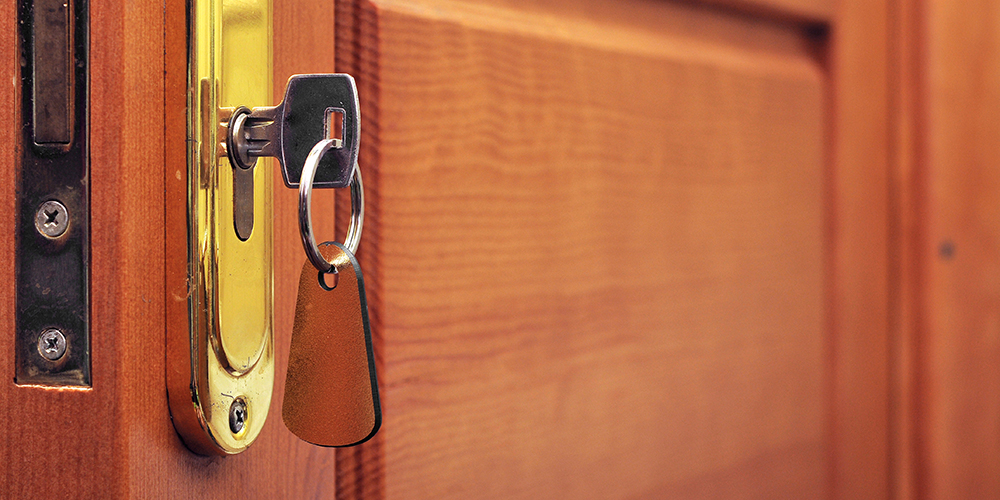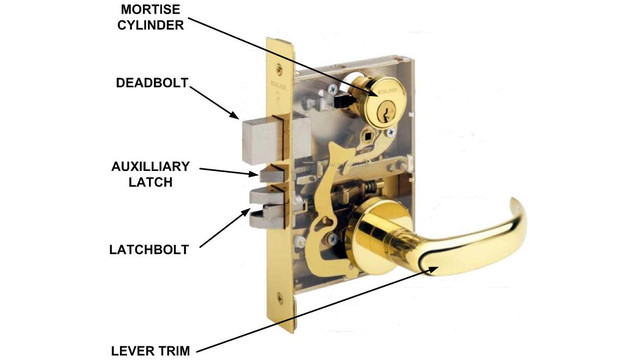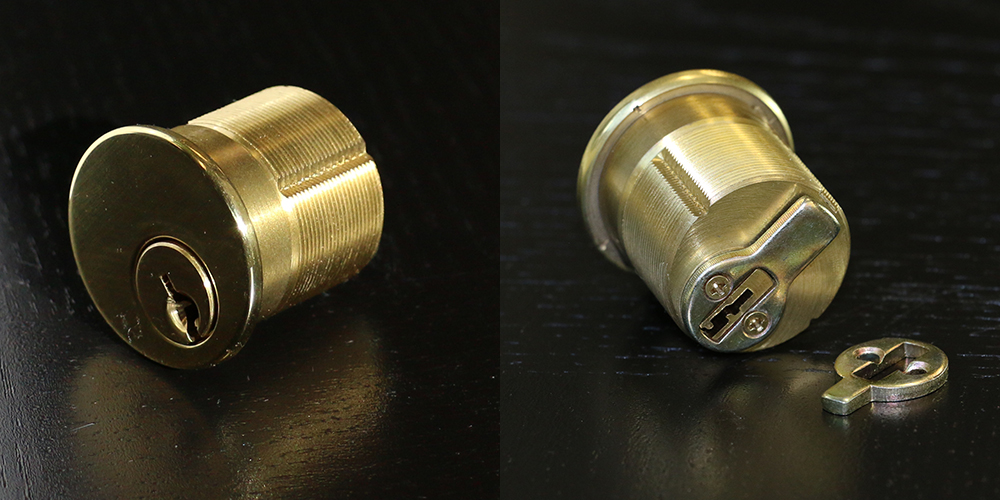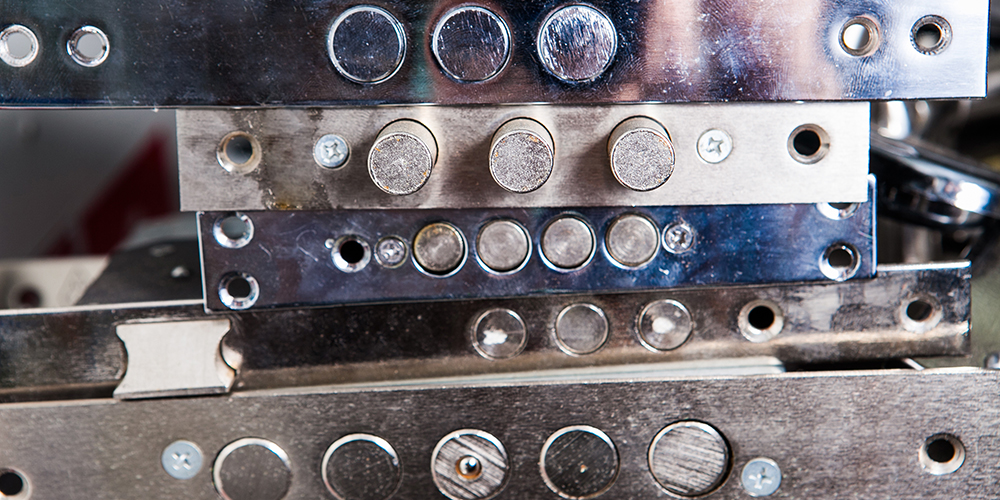Lock Blog
A resource for consumers, locksmiths, and security professionals
A resource for consumers, locksmiths, and security professionals

Mortise locks are a very popular and old design, which has stood the test of time. They are strong and they are reliable. They are also relatively diverse in their construction. A detailed explanation of the lock installation process would not be useful for all brands and models of mortise locks, but a general overview can be found in the “How They Work” section. Because of their longevity, it is also important to know how to service the locks and find what might be wrong with them. With their unique modular construction, the lock can be taken apart and reassembled which makes it possible to save the history that some of these locks hold inside. Their faculties also lend them toward particular usages. Once you learn the differences between mortise and other locks, you may find yourself feeling more secure. And you may also find yourself in want of better protection.
Mortise locks are widely used in commercial spaces because of their strength and reliability. The components for each model and brand will vary slightly, but the design of the mortise is meant to withstand use and abuse. Mortise locks lend themselves to high use and are ideal for business and buildings that have very heavy foot traffic. The internal mechanisms are also designed to be easily replaceable and serviceable, which comes in handy for new homeowners. Components have solid metal construction, large springs and are built out of hardy materials. After an extended period of commercial or home use, the locks will need to either be replaced fully or in parts. For homes, the amount of use will most likely not begin to affect the lock’s usability until generations have past or severe weather has rusted or weakened the components. Most mortise locks found in old homes are original to the house, and because of the lock’s longevity they can most likely continue to function for decades to come.

Mortises have different internal workings than the standard bored cylindrical lock. A bored cylindrical lock is more common on residential doors and is easily identifiable with the lock cylinder installed inside the handle or knob. What is harder to see with the naked eye, is that the latch bolt in these commonplace locks attaches to the framework of the lock. And it is not as simple as the preassembled lock that may also be used for commercial use. The mortise is an accumulation of many different pieces that must be placed into a pocket (also known as a mortise) in the door. A preassembled lock will also fit into a notch in the door, but a mortise must be assembled around the pocket. The parts of the lock are:
Additional features include:
By looking at the bolt work inside of the lock body, you can see that the mechanisms are larger. And by simply holding the parts you can feel their weight. The size and weight allow the lock to withstand more use. There will be two holes in the lock body. One is for the spindle and the other is for the cylinder. These holes will be different sizes (the larger most often being for the cylinder). The body will be placed into a pocket that has been cut into the door. Then the cylinder will thread into the lock body, through the door, and the knobs will thread onto the spindle. The spindle will have been fit through the door and lock body before the knobs are threaded. Turning the key in the cylinder will rotate a cam on the back of the cylinder and unlock the latch. From here the handle or knob will retract the latch, or in some cases the key will need to be used to fully retract the latch, and the handle will exist only to retract the unlocked latch.

Because these locks are often antiques it is very important to know how to service them and find out if they do have some flaw. Often these locks are found in older homes with quite a bit of rust. To give these locks a second life you can remove the rust, clean the bolt work, and polish the metal. As discussed above, the mortise lock can be disassembled separating the handles from the bolt work, and the bolt work from the lock cylinder. The oxidized solution (rust) can prevent mechanisms in the lock from functioning smoothly, even stopping them from functioning at all. So to remove it there are several things you can do. You can use vinegar, store bought polish, and electrolysis.
The vinegar method is to simply place the rusted metal components into a container full of vinegar (a 5% acidity is ideal). Then leave the container sit for about a day. The metal should appear to be visibly bubbling, and this indicates that the process is working. What is happening chemically is that that acidic vinegar (acetic acid) is reacting with the rust. I will not bore you with the formula, but the end product is a solution of water and iron three acetate, which is water soluble (it dissolves in water). After that is done you can pour out the liquid and cover the metal with a layer of baking soda to neutralize the acid. Wash it again, and then dry the metal thoroughly so that more rust does not form. Store bought polishes should react to the rust, in the same way, but only requires you to rub the metal. The best type of polish will fill the gaps in the metal with a coating so that the rust does not return immediately.
Electrolysis is a process to use if the rust is set deeper in the metal. Given that these mortise locks can be from several generations back, it is likely you may need something as powerful as electrolysis. The idea of the process is to run an electric current through a liquid (water in most cases) to chemically changed the iron oxide (rust). This removes the rust without harming the metal that it is attached to. There are different scales of size and power that you can use to deliver this process. For lock components, you will most likely not need rebar and a large plastic tube, as shown in some video tutorials. The basic tools that you need to do this process at home are a non-conductive container (so not metal), a metal conductor (nothing copper), the rusted locking mechanisms, a way to suspend the locking mechanisms and metal conductor, cooking salt, and a way to deliver an electric current to both the conductor and the rusted components. The easiest way to complete the process is to:
Depending on the rust, this process could take anywhere from 20 minutes to 2 hours (it also depends on the size of the container, the surface area of the item/items, etc.). The water will begin to turn a murky brown, and a black film will develop on the surface, which means the process is working. When you are removing your mortise lock components make sure that you have turned off the electrical current before you interact with the water or lock parts. Then finally rinse your metal pieces, as they will be covered in the brown solution from the chemical reaction, and polish them clean with steel wool (or other abrasive).

There are several things that can commonly go wrong with an old or heavily used mortise lock. Sometimes the knob or handle can just fall out of the door. If your handles are falling off, the issue is simply that your spindle (the long rod that connects both handles through the door) or handle needs to be replaced. Most often the threading on the spindle or handle has worn down so that it can no longer screw into the other mechanism and secure.
Another thing that may happen is the key may no longer retract the latch bolt. When the latch is unaffected by the use of the keyway (with the correct key), it may be as easy as replacing the cam (small lever) on the back on the lock cylinder. If the cam is broken or damaged, the connection between the cylinder and the bolt work is interrupted. You could also replace the entire cylinder at this point, but the cam is most likely the sole issue. You can take the cylinder out of the door and by turning the key in the cylinder see if the cam turns and if the metal is bent or broken. If the cam is working and whole, then the next step is to remove the lock body. Once the lock body is out of the door you will need to open it.
To open the lock body on a mortise, you need to remove the latch cover. There may be a screw or a series of screws that are keeping the latch cover attached to the rest of the housing. When you are unscrewing these screws it is important to keep the pressure on the latch cover. If you are not holding the cover down with some amount of pressure, parts of the lock may be propelled at you. By unfastening the screws, components within the lock that are spring loaded can shoot upward injuring you. The parts may also simply fly out and be lost. Once the cover is off, things may come up so they are not resting properly and that is fine, just remember to depress them back into their proper position when the latch cover is put back together.
Another good tip is to take a picture of the mortise’s bolt work so you have an image of where everything goes. That way in the case items must be removed they can be properly refitted. On the inside of the lock body, look at where the cam would connect with the bolt work and see if manipulating that part with you hand retracts the latch. If it does, the next thing that may be causing the problem is that the lever may be sagging. A sagging lever is caused by a broken or weak spring. The spring to examine will most likely be the largest one and placed against the hub of the spindle and the wall of the lock body. The mechanism on the hub will not be vertical as a result of the spring malfunctioning, and that will cause the key to not retract the latch.
If you are the owner of a business office, mortise locks are probably the answer you have been looking for. If you own an ancestral home, you may wish to service your locks instead of parting with these antiques. Remember safety is key, not only when you are installing the locks, but also in the way you service them. When working with acids and electricity it is best to handle things cautiously and scientifically. Trial and error will create a deeper understanding of the tools and processes, so do not be discouraged by a lack of immediate success. Trial and error extends to both servicing and installation. If you ever have any doubts about your abilities, for your own safety, professional locksmiths can install and service these type of locks. Always take into account your ability and the consequences of failure. For example, a mortise lock that you miss-install in the interior of your home does not compromise your home’s base security, but how important is it that that room is secured? Disaster is mainly problematic when these locks are miss-installed or compromised during amateur servicing on perimeter doors that are in place to keep you safe. Be safe in all things that you do, and never stop improving your home security.
Category: Lock Types, Residential